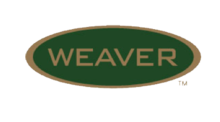| Revision as of 21:52, 25 December 2024 editStormm001 (talk | contribs)Extended confirmed users718 editsNo edit summaryTags: Mobile edit Mobile web edit← Previous edit | Latest revision as of 14:48, 9 January 2025 edit undoBearcat (talk | contribs)Autopatrolled, Administrators1,568,080 edits WP:DRAFTNOCAT | ||
| (3 intermediate revisions by 3 users not shown) | |||
| Line 8: | Line 8: | ||
| | type = ] | | type = ] | ||
| | foundation = {{start date and age|1930}} | | foundation = {{start date and age|1930}} | ||
| | location_city = ], ] | | location_city = ] | ||
| | location_country = |
| location_country = United States | ||
| | location = | | location = | ||
| | locations = | | locations = | ||
| Line 49: | Line 49: | ||
| *''Weaver's new era riflescopes'' in Sporting Shooter, 1. Januar 2009, | *''Weaver's new era riflescopes'' in Sporting Shooter, 1. Januar 2009, | ||
| {{Drafts moved from mainspace|date=January 2025}} | |||
| ] | |||
| {{improve categories|date=December 2024}} | |||
Latest revision as of 14:48, 9 January 2025
American manufacturer of riflescopesThis article has multiple issues. Please help improve it or discuss these issues on the talk page. (Learn how and when to remove these messages)
|
 | |
| Company type | Subsidiary |
|---|---|
| Industry | Optics and Sporting Goods |
| Founded | 1930; 95 years ago (1930) |
| Headquarters | Anoka, Minnesota, United States |
| Website | www.weaveroptics.com |
The W.R. Weaver Co. (commonly known as Weaver) is an American manufacturer and brand of riflescopes and riflescope mounts.
In addition to various innovations in the field of riflescopes, the company is known for the so-called "Weaver rail" - a rail accessory mount. It formed the basis for the Picatinny rail (STANAG 2324) and later the NATO rail (STANAG 4694).
History
William Ralph Weaver founded the company in 1930 in a small workshop in Newport, Kentucky. Before that, he produced license plates on self-built machines. The rifle scopes available at the time, usually imported from Germany, were relatively expensive; Weaver was able to significantly undercut the price with his rifle scopes. In 1933, the small company moved to larger premises in El Paso, Texas.

The company grew steadily, and by the 1940s, Weaver was the world's largest manufacturer of rifle scopes , spurred by orders for the U.S. armed forces during World War II. During the war, Weaver produced 36,000 Type 330C rifle scopes, under the military designation M73B1, for the Springfield M1903A4 sniper rifle. Unlike other companies, Weaver was relatively successful in returning to the civilian market after the war.
In 1947, Weaver introduced the K-Series lineup of hunting scopes (the first being the K4) which were the first high-quality, affordable rifle scope to be introduced into the civilian market.
In 1964, the company moved again to newly built, larger premises; with 600 employees, Weaver reached its peak in the late 1960s. However, WR Weaver overextended himself with his focus on innovation and growth and was forced to sell his company to the Olin Corporation. Increasing competition from home and abroad caused Weaver problems, and production was finally stopped in 1984. Omark Industries took over the production of the mounts in Onalaska, Wisconsin and sold imported riflescopes under the Weaver brand from 1988 onwards. Weaver was bought and split up by Alliant Techsystems in 2001; Alliant Techsystems sold the optical division to Meade Instruments Co. in 2002 but kept the mounts. In 2008, Alliant Techsystems bought Weaver Optics back and reunited it with the mounts company. Weaver Optics is now part of the Vista Outdoor company.
Weblinks
- Bryce Towsley: 80 Years of Weaver Scopes in American Rifleman, 28. Juni 2010
- David Fortier: An American Tradition In Optics in Shooting Times, 23. September 2010
- Howard E. French: Weaver Scope Mounts division purchased by Omark in Guns & Ammo, 1. Juli 1984
- Weaver's new era riflescopes in Sporting Shooter, 1. Januar 2009,